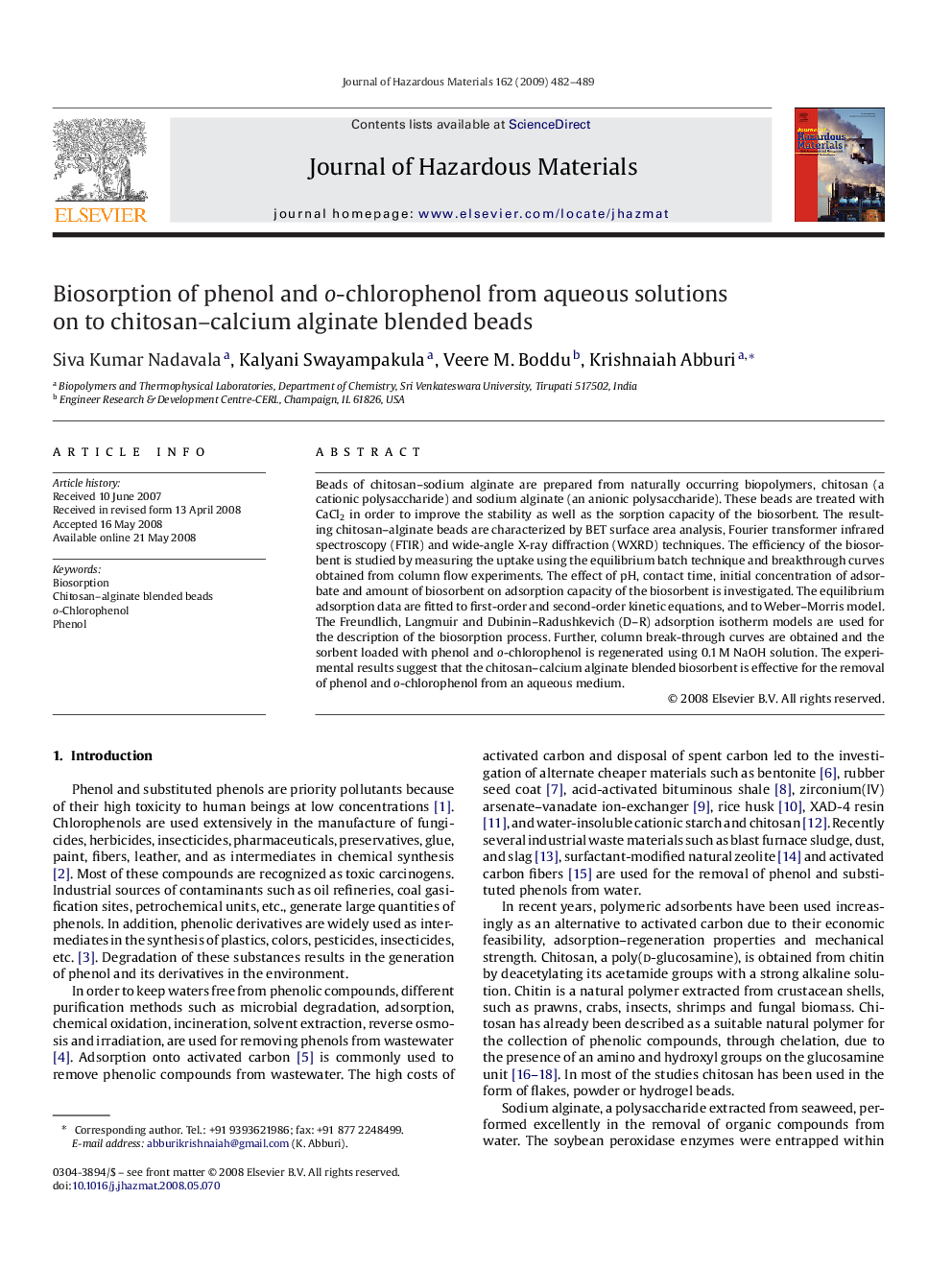| Article ID | Journal | Published Year | Pages | File Type |
|---|---|---|---|---|
| 582601 | Journal of Hazardous Materials | 2009 | 8 Pages |
Abstract
Beads of chitosan-sodium alginate are prepared from naturally occurring biopolymers, chitosan (a cationic polysaccharide) and sodium alginate (an anionic polysaccharide). These beads are treated with CaCl2 in order to improve the stability as well as the sorption capacity of the biosorbent. The resulting chitosan-alginate beads are characterized by BET surface area analysis, Fourier transformer infrared spectroscopy (FTIR) and wide-angle X-ray diffraction (WXRD) techniques. The efficiency of the biosorbent is studied by measuring the uptake using the equilibrium batch technique and breakthrough curves obtained from column flow experiments. The effect of pH, contact time, initial concentration of adsorbate and amount of biosorbent on adsorption capacity of the biosorbent is investigated. The equilibrium adsorption data are fitted to first-order and second-order kinetic equations, and to Weber-Morris model. The Freundlich, Langmuir and Dubinin-Radushkevich (D-R) adsorption isotherm models are used for the description of the biosorption process. Further, column break-through curves are obtained and the sorbent loaded with phenol and o-chlorophenol is regenerated using 0.1Â M NaOH solution. The experimental results suggest that the chitosan-calcium alginate blended biosorbent is effective for the removal of phenol and o-chlorophenol from an aqueous medium.
Keywords
Related Topics
Physical Sciences and Engineering
Chemical Engineering
Chemical Health and Safety
Authors
Siva Kumar Nadavala, Kalyani Swayampakula, Veere M. Boddu, Krishnaiah Abburi,
